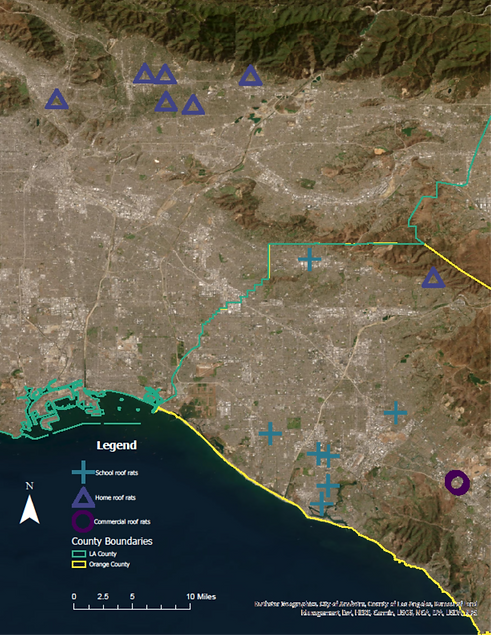

Diet of Commensal Roof Rats in Southern California
UCANR & Department of Biological Science, California State University Fullerton

Commensal rodent management is under immense pressure. There are countless efforts to ban rodenticides across the US. California has a moratorium on most uses of second-generation anticoagulant rodenticides, Diphacinone and there is immense pressure on Chlorophacinone and Warfarin also. The most recent PID from EPA provides us with a good idea of the future of rodenticide use in the US There have been bans on the use of glue boards in Canada, and the requirements for special licences to use them in the UK. In New Zealand, certain commercially available snap traps are even classed as inhumane. Many of these bans and restrictions have been driven by NGO’s that have a complete lack of understanding about the intricacies of pest management. Almost all are a proponent of sanitation and believe that sanitation (and exclusion) should be the only necessary components of pest management and that they can replace the use of other vital tools like rodenticides and trapping.
Across the ever expanding range of the roof rat, they are often found in clean suburban areas that are devoid of trash. It is unlikely that sanitation has any impact on their management. However, there is little proof of this. Sanitation is also said to be an important component of Norway rat and house mouse management, yet no one has proven that these methods are actually effective.


We hypothesis that commensal rodents such as roof rats rely on plants and animals that are either naturally occurring or planted for landscaping and horticulture in their environments, and that, because of this, sanitation alone is not a stand-alone effective measure for the control of commensal rodents.
Knowledge of the diet of commensal rodents across gradients of natural, agricultural, and urban land-uses will also be extremely beneficial for providing future management decisions, especially is they are relying on things that can’t be controlled with sanitation.